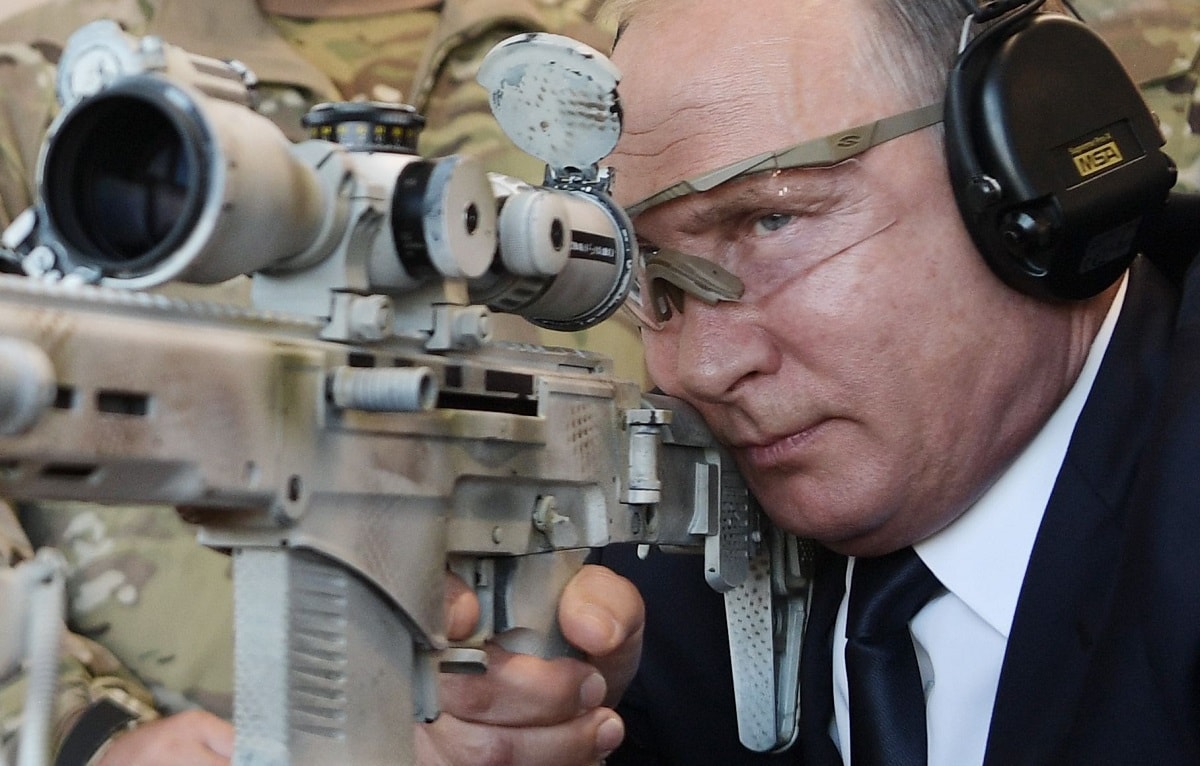It is hard to improve upon perfection, which is why the changes to the Cold War era Dragunov SVD rifle have been rather small even in recent years. Technically not a ‘sniper rifle,’ the Dragunov has been the mainstay ranged infantry weapon of the Soviet/Russian Army since it was introduced in 1963. Designed by Yevgeny Dragunov in the 1950s, the SVD is a gas-operated, semi-automatic rifle that was introduced to engage different types of targets within a range of 1,200 meters.
Easy to use, maintain and repair, the semi-automatic designated marksman rifle has been used throughout the world not only by trained marksmen but by insurgents and militants around the globe – and with minimal training could give an advantage to those paramilitary forces.
In early 2020 the Russian military received the most updated version – the SVD Modernized or SVDM – which could make the weapon even deadlier in the right (or more accurately wrong) hands. Chambered in the same 7.62x54mmR, it is still manufactured by the Kalashnikov Concern. The newest versions are reportedly slightly more accurate thanks to a heavier chrome-lined barrel and improve muzzle device, while it also features improved ergonomics as well as the ability to mount a wider range of accessories. Instead of the wooden stock and grip, the SVDM utilizes a polymer-based handguard and pistol grip along with the modular folding stock, which also offers a notable overall reduction in weight.
Russia is now reportedly offering the Indian Army the same comprehensively upgraded version – and those could replace the initial SVD Dragunov that India first procured in the early 1990s.
Replacing Perfection
Despite the numerous upgrades and improvements, the Russian military could also be looking to replace the SVDM with a true “infantry sniper rifle.” Russia Beyond reported that there are a number of potential candidates that include the Kalashnikov Concern’s SK-16 semi-auto sniper rifle. Also in the running are the Orsis’s T-5000 and the Lobaev Arms’ DVL-10M3.
The offering from Labaev Arms is notable in that it is a new multi-caliber sniper rifle that was developed by Lobaev Arms. The latest in a series of bolt-action sniper rifles, the DVL-10M3 weighs just 4.5 kg, but still features a barrel length of 500mm. The DVL-10 platform, which was initially created for counter-terrorist units operating primarily in urban areas, was not designed as a one-size-fits-all solution, but rather is adaptable to the needs of the soldier or unit. Barrels of various calibers can be mounted on the sniper rifle: 7.62x51mm (.308 Winchester), 6.5x47mm Lapua, and 6.7mm (.338) Federal.
In less than a decade in operation, the Russian-based ORSIS has become well known for its world-class long-range rifles including its T-5000. The rifles are built on a manually operated bolt action with dual front locking lug bolts, and all the actions are reported to be machined from high-grade stainless steel and are available in both right- and left-handed versions.
The rifles are fed from detachable box magazines, which offer five or ten-round capacity. The standard stock for the T-5000 is made of a D16T aluminum alloy with glass bedding. A shoulder stock is side-folding and has a proprietary hinge design and lock. As with the Labaev Arms DVL-10 platform, the T-5000 are produced in a variety of calibers.
The Kalashnikov Concern’s rifle stands out in that it is semi-automatic, which could either be seen as a pro or a con depending on the eventual use. The basic version is chambered for the 7.62x54mmR, yet it is still a major departure from the old school simplistic style of Eastern Bloc small arms of the Cold War. It looks and functions much less like a Warsaw Pact weapon and seems to be more in line with a modern sniper rifle from NATO. In the field users can also change the caliber.
“It can be chambered with .308 Win or upgraded to .338 LM calibers, thus increasing (or decreasing) the fire distance from 600 to 1,800 meters. It allows a user to combine two rifles inside of one,” Ivan Kudryashov, a former sniper of the Russian Special Forces, told Russia Beyond.
The biggest downside with the Kalashnikov Concern’s SK-16 is that it is what one expert described as a “sensitive weapon. It needs proper usage and can’t be treated unprofessionally.” For a nation that used a hammer as the main tool to repair a tank and where loving care of a rifle is to not lose it, the SK-16 could be indeed too “sensitive.”
Perhaps given all the considerations, Russia should just stick with the SVDM. It is hard to improve upon perfection.
Peter Suciu is a Michigan-based writer who has contributed to more than four dozen magazines, newspapers and websites. He regularly writes about military small arms, and is the author of several books on military headgear including A Gallery of Military Headdress, which is available on Amazon.com.

